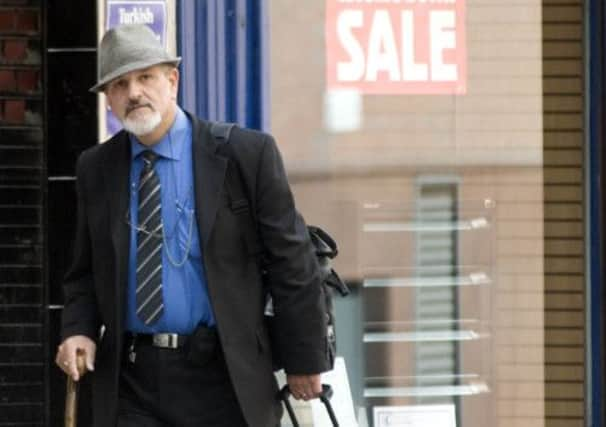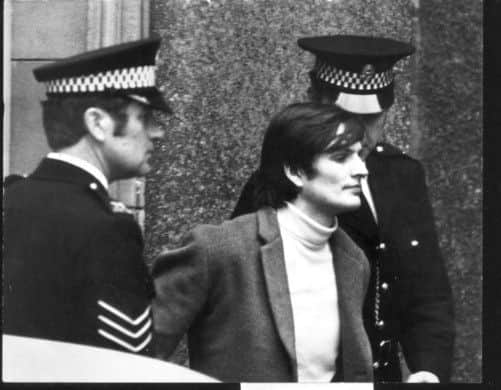Triple axe murderer Thomas McCulloch released


McCulloch, who went on a bloody rampage after escaping from the state psychiatric hospital Carstairs in the 1970s, was released from Castle Huntly yesterday morning.
Scottish ministers had unsuccessfully opposed the Parole Board’s decision to release McCulloch, 65, after more than 43 years in custody.
Advertisement
Hide AdAdvertisement
Hide AdHe was first sent to Carstairs in 1970 for attempting to murder two hotel staff during an argument over a sandwich, and was then placed in solitary confinement after being diagnosed as a psychopath.


In 1974, he escaped over the Lanarkshire institution’s barbed-wire fence with fellow patient Robert Mone and murdered three people over six hours.
He killed hospital worker Neil MacLellan, 46, and patient Iain Simpson, 40, with an axe, before cutting off Mr Simpson’s ears.
The pair then murdered PC George Taylor, 30, and seriously injured another two men. Jack McAlroy was struck on the head with an axe, while Mone stabbed William Lennon six times. The two killers were caught in Carlisle after holding a young family hostage at their home.
McCulloch and Mone were initially told they would die in prison, but became eligible for parole after winning a human rights ruling in 2006.
Despite that victory, the Parole Board would only release McCulloch if it was satisfied it was “no longer necessary for the protection of the public” that he remain locked up.
Jackie Baillie MSP opposed his release on licence in her constituency of Dumbarton in 2009, in a proposal which was ultimately scrapped.
She said yesterday: “People who had come into contact with him said he remained someone who is dangerous. That was a concern for my local community, as well as family members of his victims who feel very strongly about this. His crimes were horrific.”
Advertisement
Hide AdAdvertisement
Hide AdShe added: “I’m conscious that, for the families of the victims, nothing can repay them for what he has done.”
McCulloch was previously granted day-leave from Castle Huntly and is understood to have been granted more than 100 unsupervised visits to his Dundee home in the past six years.
He applied to the Parole Board for early release five times previously, but this time officials deemed the killer was no longer a threat to the public.
David Sinclair, of Victim Support Scotland, said: “As a victims’ organisation, we are aware there will be people who may be concerned about the release of violent criminals.
“However, we live in a democracy and have to recognise that the relevant authorities will have taken into account all the issues that they had to consider in making this decision.”
The decision to release McCulloch surprised MSP Graeme Pearson who, as a young police officer, was involved in his arrest almost 40 years ago.
A member of Holyrood’s justice committee, he said: “Years ago, when we arrested him after he had committed those murders, I anticipated he would never be liberated.
“I would have thought that neither he, nor Mr Mone, would ever be liberated.
Advertisement
Hide AdAdvertisement
Hide Ad“But if the policies and practices work, these are the kinds of outcomes we can expect from time to time.”
A Police Scotland spokesman added: “Keeping people safe is the first priority for Police Scotland, working closely with its partners.
“By making best use of the collective expertise of the police, local authorities, the Scottish Prison Service, health and other partners, as well as the Crown Office and Procurator Fiscal Service, we manage high-risk offenders within the community and ensure the appropriate safety and support mechanisms are in place.”